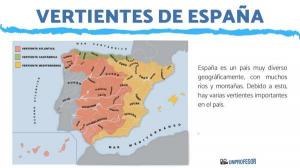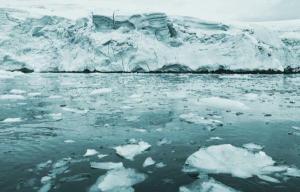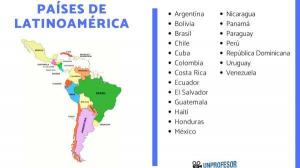Solar and lunar eclipse
The solar eclipse and the lunar eclipse are natural phenomena that we can see on Earth. The solar eclipse occurs when the Moon passes through and hides part of the Sun that we see on Earth. In the lunar eclipse it is the Earth that is crossed and the Moon hides.
In both cases there is the "disappearance" of one of the stars by the shadow of another when they are aligned.
Eclipses occur because the Moon moves around the Earth and the Earth, in turn, moves around the Sun.
| lunar eclipse | solar eclipse | |
|---|---|---|
| Definition | Hiding the visible part of the Moon when the Earth is crossed between the Sun and the Moon. | Concealment of the Sun when the Moon crosses between the Earth and the Sun. |
| Types of eclipse |
|
|
| Observation | It is safe to watch a lunar eclipse, while not driving a vehicle. | Use special equipment to protect the eyes from the direct rays of the Sun. |
| Upcoming events |
|
|
lunar eclipse
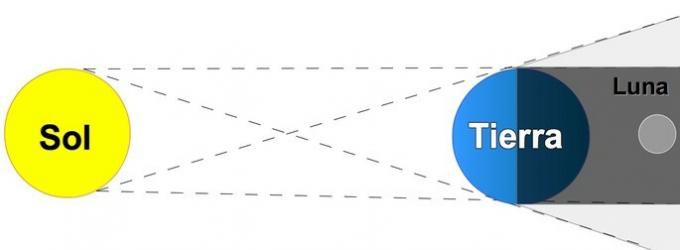
The lunar eclipse is the phenomenon that occurs when the Earth crosses between the Sun and the Moon, preventing the Sun's light from being reflected on the satellite.
This can only happen when the Moon is in its full moon phase. That is, when we see the Moon fully illuminated and suddenly it begins to darken.
However, lunar eclipses do not occur in all lunar cycles, because the orbit that the Moon describes around the Earth has a slight inclination.
Depending on the part of the Earth's shadow that falls on the Moon, the following can be distinguished:
- total eclipse: the shadow of the Earth covers the entire Moon.
- Partial eclipse: the shadow of the Earth only passes through a part of the Moon.

The next total lunar eclipses will occur on the following dates:
- May 16, 2022 - Visible in America.
- November 8, 2022 - Visible in Asia, Australia and the Pacific Ocean.
- March 14, 2025 - Visible in the Americas, Africa, and part of Australia.
- September 7, 2025 - Visible in Europe, Asia and Australia.
You may also be interested in seeing Moon phases.
solar eclipse
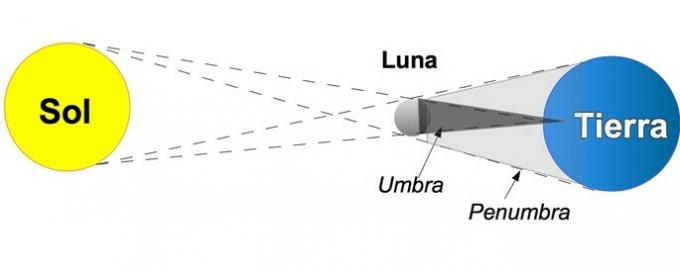
The solar eclipse is the phenomenon that occurs when the Sun is hidden during the day because the moon crosses between it and the Earth. This causes the shadow of the moon to be projected over a part of the Earth, thus causing people in that region to stop seeing the sun illuminated.
They occur when the Moon is in the new moon phase. Every year there are at least two solar eclipses
To be able to observe a solar eclipse, you must use special lenses or binoculars. Never look directly at the Sun! Doing so can damage vision.
Four types of solar eclipse can be distinguished:
- total eclipse: it is observed in those places where the darkest internal shadow of the Moon (the umbra) falls.
- Partial eclipse: it is observed in those places where the half-light of the Moon falls, it is the least dark part of the shadow.
- Annular eclipse: it is observed when the Moon is farthest from the Earth, so the umbra does not reach the Earth. A bright ring is seen around the Moon, because it does not completely cover the Sun.
- Hybrid eclipse: observed when a total eclipse and an annular eclipse are combined.

The next solar eclipses will be:
- December 4, 2021: fully visible in Antarctica and partially in southern Africa.
- April 30, 2022: partially visible in Chile, Argentina and part of the Pacific.
- October 25, 2022: Partially visible in most of Europe, North Africa, and West Asia.
- April 20, 2023: Partially visible in Australia, Indonesia, and the Pacific.
- October 14, 2023 - Visible as an annular eclipse in the US, Mexico, Panama, Colombia, and Brazil.
You may also be interested in:
- Natural phenomena
- Rotational and translational movement
References
Bakich, M.E. (2021) Solar eclipse 2021: Prepare for a "ring of fire" on June 10. Astronomy. June 2021.

